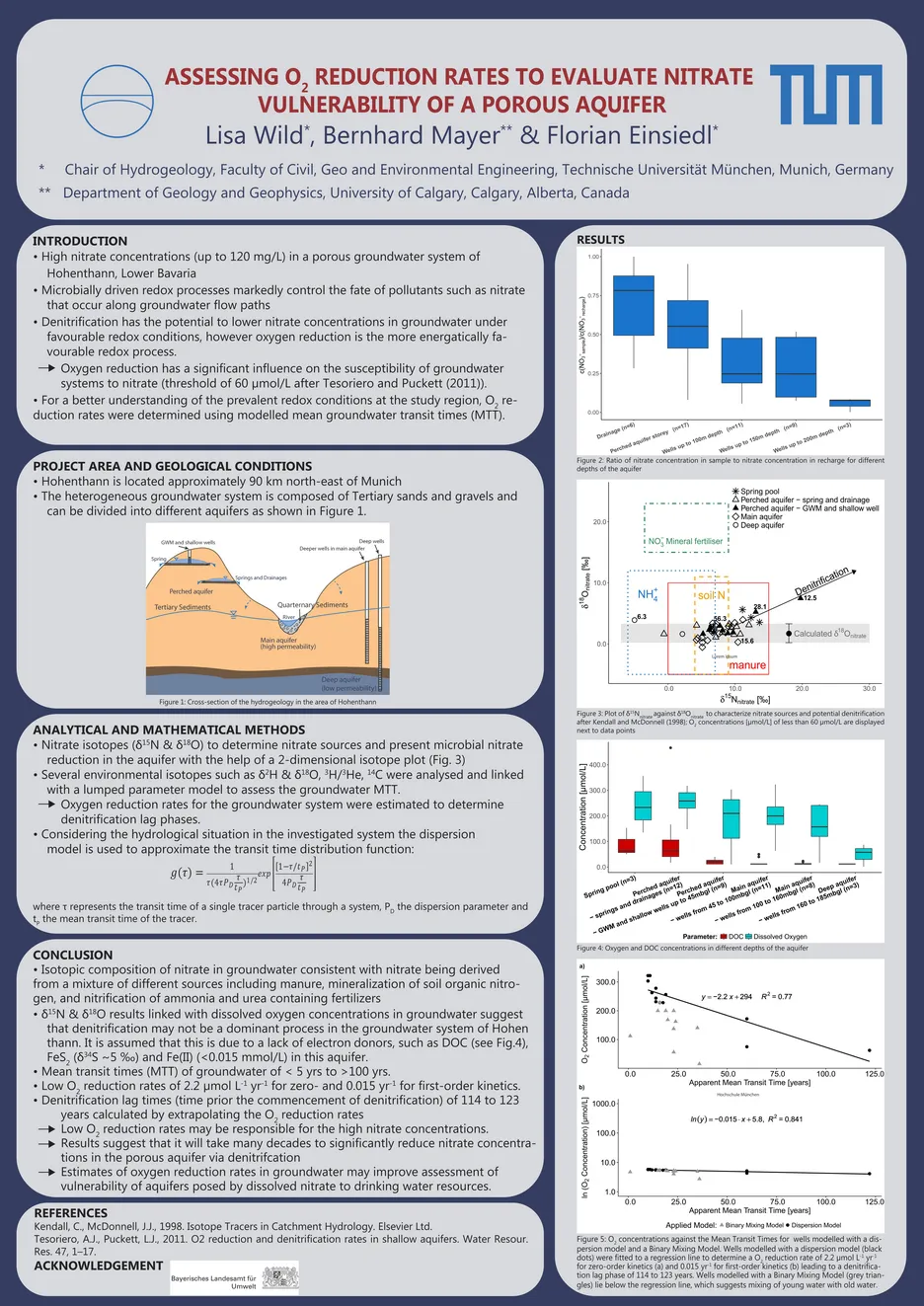Nitrate contamination and groundwater residence times in the Molasse Basin, Lower Bavaria
During the last 50 years, human activity has strongly altered the quality of groundwater in numerous porous aquifers. The increase of nitrate concentration that has been observed in many aquifers around the world, especially in Europe and Northern America, causes the most concern due to its detrimental health effects in drinking water.
In the area of Hohenthann, Lower Bavaria, nitrate concentrations as high as 120 mg/L were detected in the porous groundwater system. Therefore, we investigated the dominant sources of nitrogen and assessed the denitrification rates and the self-purification potential of the polluted groundwater system in South Germany by using stable isotope technique linked with water age-dating methods. In addition, we determined reduction rates of dissolved oxygen (O2) to calculate denitrification lag times (time prior to commencement of denitrification).
This project was in cooperation with the Ministry of Environment and Health and the Bavarian Environment Agency and aims to (1) improve the groundwater quality of the contaminated aquifer and (2) to protect deeper groundwater systems in this region from nitrate contamination.
Project results overview

